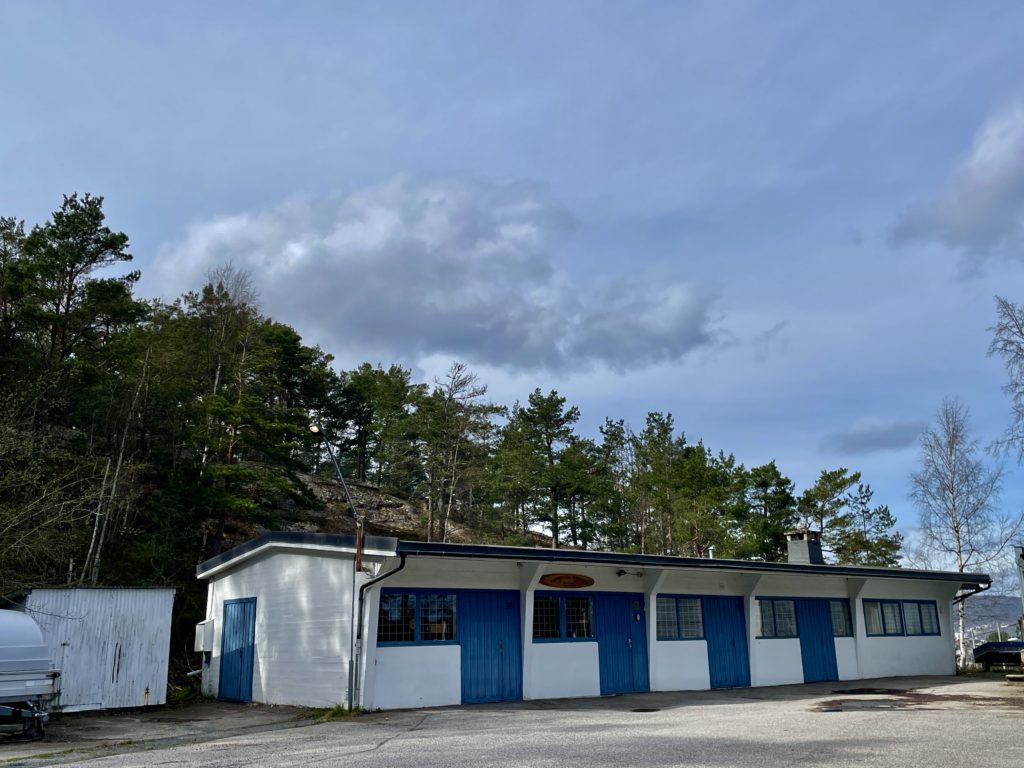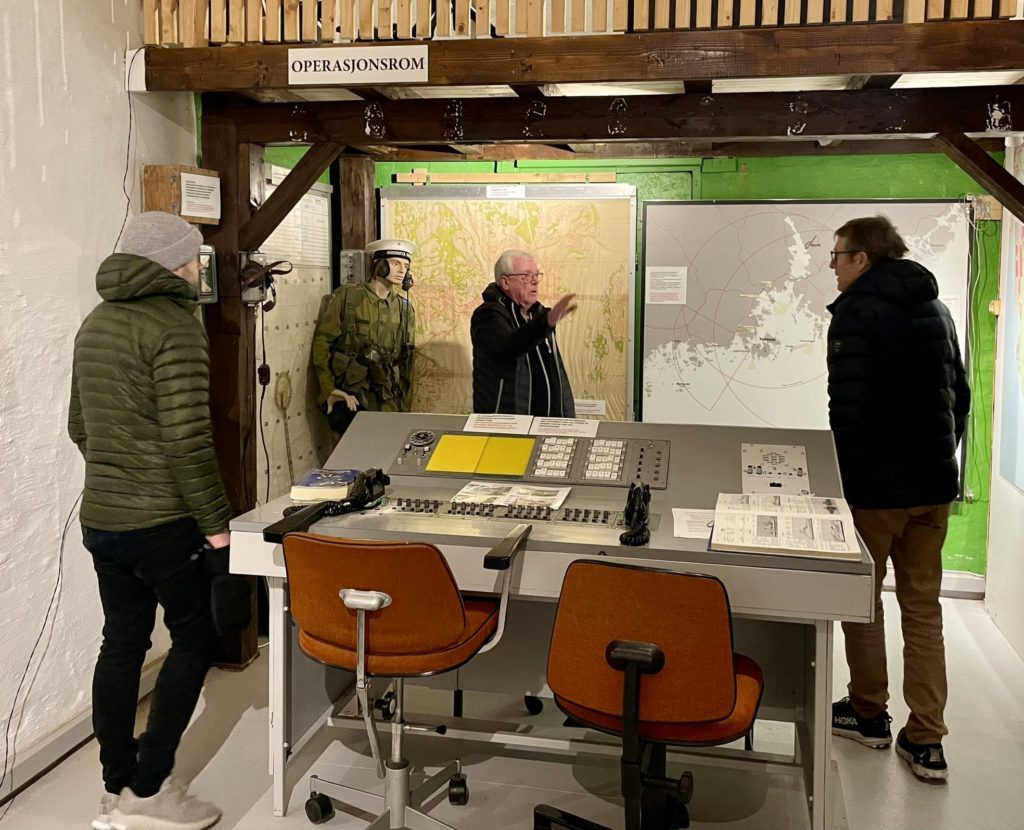From the last half of the 19th century to the beginning of the 20th century, the Fortress and Navy's storage and maintenance area for cannon ammunition was located in the north-western part of Odderøya and on Lagmannsholmen. The Crimean War in the middle of the 19th century led to a rapid development of cannon equipment. The new so-called bomb cannons were also introduced on the fortifications in Kristiansand.
The new cannons were made according to carefully specified caliber tolerances, so that both precision and firing range increased considerably. But this made great demands on the storage and maintenance of the gunpowder. Therefore, a new gunpowder house and a new ammunition laboratory were built in the north-west of the island in the period 1857 – 1867. They are marked on the Odderøya map from 1867. The ammunition laboratory is located on a rock shelf that has been blasted out about 8 m lower than the gunpowder houses. A possible explosion accident during the risky work in the laboratory would thereby be prevented from spreading to the gunpowder houses.
The Navy's gunpowder house no longer exists. It was given to Kristiansand fortifications in 1924 and has been demolished. The Fortress' artillery workshop was built on the same site after World War II. The two other buildings; the ammunition laboratory were converted into housing (Orlogsstua), but then burned down in 2013. The gunpowder house still stands and is one of the oldest buildings left on Odderøya. The building is in a poor condition.
When the port business in Vesterhavna increased in the 20th century and the need for a deep-water quay pressed on, the ammunition business had to be moved to the east side of the island for safety reasons. The laboratory was converted into housing and the fortress' gunpowder house has since been used for storing various materials.
In a letter from the Royal Ministry of Defense to the Fortress Artillery dated 20 September 1916, the Minister of Defense gave "authorization to start remodeling the old laboratory building on Odderøen so that it can be used as a residence for the head of security."
The then chief of guard was Captain Ole A. Fosby, who with the rank of lieutenant colonel was commander of the fortress during the German attack on April 9, 1940. From 1930 to 1936, captain quartermasters lived in the residence. From 1936 until April 1940, Lieutenant Colonel Birger K. Ullern lived in the residence.
After World War II, Orlogsstua was the residence of the commanders of Marine Commando Sørlandet (from 1962 Naval Commando Sørlandet). The following commanders lived in the residence:
Commander Gunnar Hovdenak 1945 – 1950
Commander Hans P. Henriksen February 1950 – 1959
Commander Reidar Gram Bruusgaard 1959 – 1963
Commander Reidar Michael Sars 1963 – 74
The significant increase in port activity worsened living conditions in the old laboratory. The commander's residence, which was built in 1918 and which after the Second World War had been used as offices for the Naval District, was returned to residential status. Commander Sars moved there in 1974, and the former laboratory building was condemned as a residence.
But the Naval District wanted to use the building as a commander's mess to cover the increased need for mobilisation. Therefore, a lease was entered into with Kristiansand Orlogsforening (KOF) who, in exchange for ensuring maintenance, was allowed to use the building for the association's purposes. Other associations that have had the opportunity to add their activities to the building include the Army's Officers' Association, the Navy's War Sailors' Association, the Redningsselskapet's Women's Association and the Danish/Norwegian Marines' Helgoland Guild.
In the years from the mid-19th century, several roads were built on Odderøya by the enterprising engineer Major Sibbern. From this time, the road originates from the flat area northwest of the island, and originally went down to Badehusbugten on the island's west side. The bay was filled in again when Silokaia was built in the 1920s.
The National Antiquarian states;
"The fortifications, the road network, the buildings worthy of preservation, the ancient monuments and the other traces of buildings and structures on Odderøya, together with the terrain, form a whole and a cultural environment which, in a national military historical and antiquarian context, is very worthy of preservation"
In the media, Odderøya is now presented as "cultural island in the middle of the city". The Norwegian Ministry of Cultural Heritage writes in a debate post on urban development that ".. the important battle that the city must win, to secure and preserve the city's roots, as well as the environment worthy of protection and individual buildings as well as other characteristics that document the city's history and that give the city its distinctive character and uniqueness."
For a long time there were only two buildings with historical defense value left in the area on the island's west side, Krutthuset and Orlogsstua. The municipality wanted to demolish Orlogsstua to make a new road down to Silokaia. Orlog's living room burned down in January 2013 and the municipality's problem was thus solved!
Now only the old gunpowder magazine remains of the old building stock. This building was used as a clothing depot and warehouse when it was no longer to be used as a gunpowder magazine. This was in operation right up until 1993. You can clearly see that the building has had an extension after it was no longer to be used as a gunpowder house.
The ammunition laboratory on Odderøya during the Cold War (1945-1994)
Today this building houses Hobbysnekkerne and is located 50 meters south of Odderøya Amphitheater. The building had a special characteristic in that there were no doors between the different rooms, but all rooms had doors to the outside. This was a safety measure that was supposed to prevent a possible explosion from spreading to several departments.
A firefighter (officer and manager), work foreman and 4-5 workers worked at the ammunition laboratory.
The mission of the department was to control the ammunition for the artillery that the Coastal Artillery had. This department was supposed to control the ammunition for the 127 mm gun for the whole country. Among other things, gunpowder samples were sent in from all forts that had 127 mm guns and it was checked whether the gunpowder had the properties it was supposed to have. If deviations were found, all propellant charges (gunpowder) had to be replaced. This department then carried out this work of changing gunpowder in all propellant charges for the relevant fort.
In addition to this work, the ammunition laboratory was responsible for all ammunition for all departments (forts) in the naval district and produced ammunition that was used during exercises with the artillery.
The department was also responsible for ensuring that all ammunition at the forts was stored in accordance with the temperature and humidity requirements that had been set.
The Orlogsstua burned down in January 2013 and the municipality's problem was thus solved!


